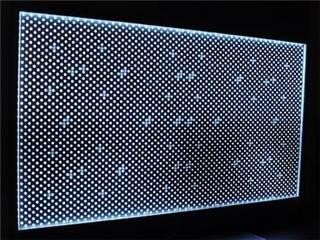Implanted chips: the first step towards "Superman"
In November 2014, Raymond McCauley made a bold decision: implant a tiny chip capsule in the position of the tiger's mouth in his left hand. How much risk this poses to the human body is still undecided. Despite this, McCauley did not hesitate: in his view, the technology of human implanted chips has matured. From scientists and engineers to entrepreneurs, from super hackers to super geeks, Macquarie has many identities, such as BioCurious biometric hacking organization sponsors, such as the Singularity University biodigital project leader. But all his identities have one thing in common: they are active in the forefront of biotechnology, and he defines himself as a "digital biologist" - this is not a decade ago, but it is now becoming a technology. Frontier innovation areas. "My experience is great, I believe that in the near future, human implanted chips will become the trend of the times." On January 30, 2015, at the closed meeting of the "TheBigTalk" summit in San Francisco, Macquarie said. Implanted chips change reality In fact, many years ago, implanting chips into the human body to control diseases, prolong life, control weapons, and even manipulate ideas has long been a common idea in novels and movies. But now, McCaw uses himself to prove that implanting chips is no longer a sci-fi vision, but has become a reality. Only one minor operation is required to implant the chip. A 2 mm diameter, 12 mm long chip capsule is fed through the probe, and the whole process is only slightly more painful than a single ear stud. After the completion, the position of the chip capsule will produce a bulge of rice grain size, but will not bring any pain or strangeness. But after the implant, the chip has brought about a huge change in the life of Macquarie. The implanted chip supports data storage and also supports NFC (Near Field Communication) wireless transmission. Therefore, Macquarie only needs to take the mobile phone from the hand to read the information stored in the chip, or inside. Deposit new data - in the "life cycle" of the capsule, only write operations can be performed more than 100,000 times. Today, Macquarie has already placed its business card information on the chip, and others only need to use a mobile phone to swipe to get his contact information. The door of his house is also equipped with an NFC device. He only needs to lean back on the doorknob with his left hand, and then twist it, and he can open the door without looking for a key. In his opinion, these are convenient. It’s a very cool thing. Of course, Macquarie is not the first person to implant a chip in the body. As early as 1998, Professor Bukaiwen Warwick of the University of Reading in London, England, once implanted a chip into the forearm and tracked his position through a computer. In 2002, Applied Data Corporation of the United States also launched a chip product called VeriChip, which is dormant after implantation, but can read information through a handheld scanner. However, compared with previous products that are more inclined to small-scale experiments, implanted chips in the past few years have really become popular. Prices range from large to small, from no power supply to carrying power, from passive reception of signals to active detection and transmission of signals. For example, the capsules that Macquarie implants in the body are very cheap, even at a stage where they have not yet reached mass availability, which costs only $99: this means that its cost will be available to everyone in the future. According to him, at least 2,000 people in the world have implanted the chip in the body. Volumetric Flask,Transparent Volumetric Flask,Laboratory Clear Volumetric Flask,Clear Glass Volumetric Flask Yancheng Rongtai Labware Co.,Ltd , https://www.shtestlab.com